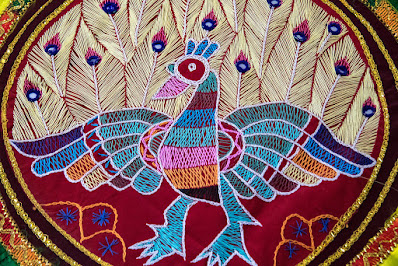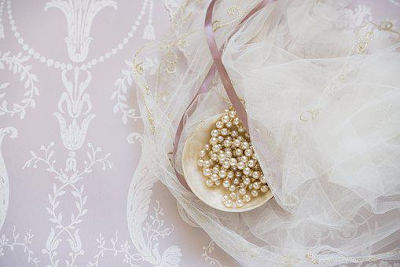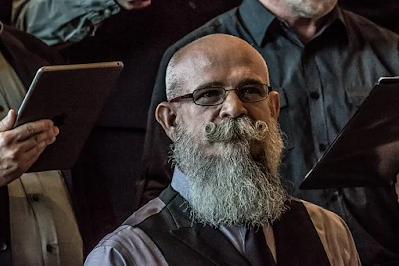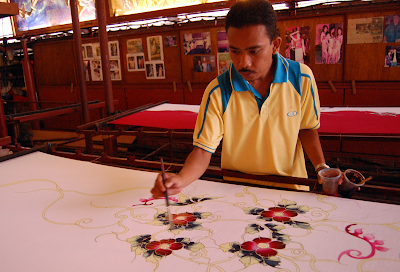Featured
- Get link
- X
- Other Apps
APPLIQUÉ
Appliqué is a decorative surface design method that gives the background cloth character and texture.
The name comes from the French word appliquer (and its Latin equivalent applicare), which meaning "to connect" or "to adhere." While its original purpose was most likely to reinforce worn portions or cover holes, appliqué evolved into a creative art form that has been practiced by various civilizations for ages.
Laying fabric pieces on top of a backdrop cloth to produce a pattern or image is known as traditional appliqué.
Many colors and layers of cloth may be used in intricate appliqués.
The raw edges of each individual piece of cloth are turned under and hand-sewn to the background fabric using an invisible thread once it has been cut out.
The introduction of new materials (water dissolvable stabilizer, glue sticks, and fusible web), as well as the adoption of new standards (machine sewing vs. hand stitching), have made appliqué quicker and simpler to perform, contributing to its sustained popularity.
Broderie perse (Persian embroidery), often known as chintz appliqué, is a version of classical appliqué.
Reverse appliqué is the polar opposite of typical appliqué.
The textiles that will be used in the design are all layered.
The design is created by cutting down to uncover the layers.
The raw edges of the previous cloth are turned under and sewed to the next.
The Kuna Indians of the San Blas Islands, off the coast of Panama, use this technique to produce their molas.
Modern graphics to traditional themes from their stories and culture are used in the patterns.
Inlay appliqué is a kind of reverse appliqué that is similar to reverse appliqué.
From the backdrop fabric, the required form is cut off.
A second cloth is positioned behind the opening, and the background opening's turned under edges are sewed to the new fabric.
Any excess fabric is cut off.
Appliqués may be three-dimensional, protruding above the backdrop fabric's surface.
Appliqué can be found on garments and household items all over the world, dating back to the ancient Egyptians.
Elaborate appliqué was utilized on heraldic and religious banners and ceremonial attire throughout the Middle Ages.
Appliqué is a kind of embellishment seen on national (festival) garments and ethnic folk wear from the eighteenth and nineteenth centuries.
The twentieth century is connected with a number of appliquéd clothes.
By the end of the century, the Irish dancing competition outfit had developed from a plain garment in the 1950s to an ornately appliquéd and embroidered garment.
The poodle skirt was a felt circular skirt with a poodle (or other motif) appliqué that was popular about 1955.
Appliqués were used by hippies, or flower children, in the mid 1960s to embellish and modify their clothing.
Appliqués are used by wearable artists to produce one-of-a-kind clothes.
Elsa Schiaparelli, Franco Moschino, Gianni Versace, Bob Mackie, and Christian Francis Roth are just a few of the designers that have incorporated appliqué in their collections.
The whole range of Koos van den Akker is dedicated to quilted, appliquéd collages.
See also:
Embroidery; Moschino, Franco; Schiaparelli, Elsa; Versace, Gianni and Donatella.
References And Further Reading:
Avery, Virginia. The Big Book of Applique. New York: Charles Scribner’s Sons, 1978.
Teufel, Linda Chang. Koos Couture Collage: Inspiration and Techniques. Worthington, Ohio: Dragon Threads, 2002.
- Get link
- X
- Other Apps















